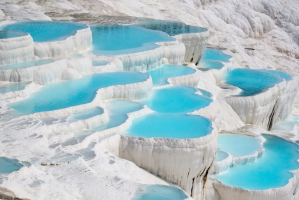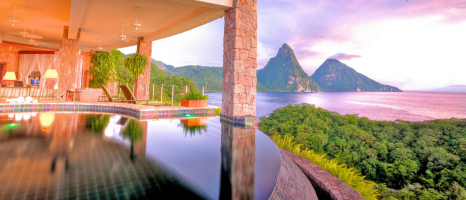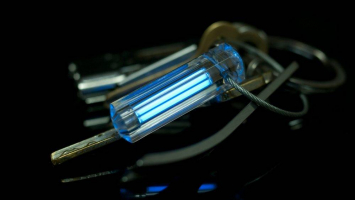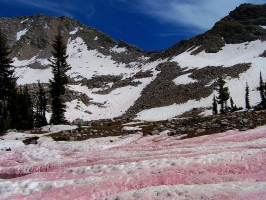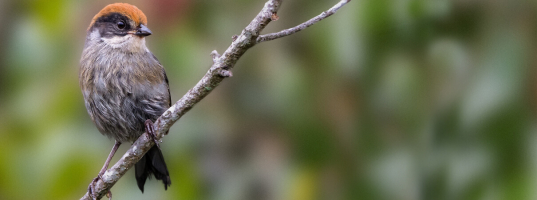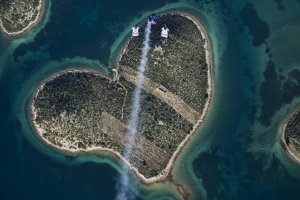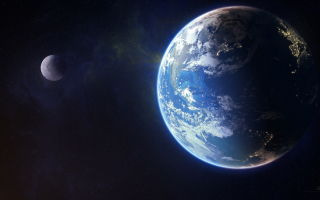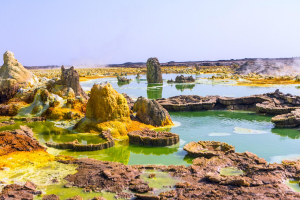Top 5 Rarest Atmospheric Phenomena on Earth
The earth's climatic systems are highly complex, producing weather and climate conditions of various kinds at all times of the day. Predicting the weather, ... read more...even a few days in advance remains an imperfect science fraught with difficulties exacerbated by climate change. Some of these odd weather phenomena appear to be occurring more frequently as climate change continues to accelerate. Let's find out the rarest atmospheric phenomena on earth below!
-
Thundersnow, also known as a winter thunderstorm or a thunder snowstorm, is a type of thunderstorm in which snow instead of rain falls as the major precipitation. It is regarded as a rare and exceptional occurrence. It often falls in areas of high upward motion within an extratropical cyclone's cold sector. It has the same thermodynamic properties as any other type of thunderstorm, but the peak of the cumulonimbus cloud is usually relatively low. In addition to snow, graupel and hail may fall. Thundersnow is frequently associated with a strong winter storm or blizzard with winds exceeding tropical storm force. As a result, visibility is frequently less than 14 miles, with significant wind chills that can cause frostbite. There is also a greater likelihood that thundersnow lightning will have a positive polarity, which is associated with greater destructive potential than the more common negatively-charged lightning.
Thundersnow is typically caused by three factors, including a normal snowstorm with intense vertical mixing, which creates favorable conditions for lightning and thunder to occur. It can also happen as a result of a lake or ocean effect thunderstorm, which is caused by cold air passing over relatively warm water. This phenomenon frequently causes snow squalls to form over the Great Lakes.
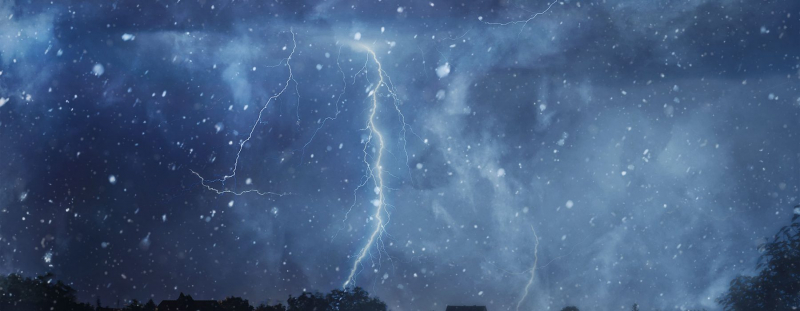
via: Arctic Newsroom - Arctic Snow and Ice Control 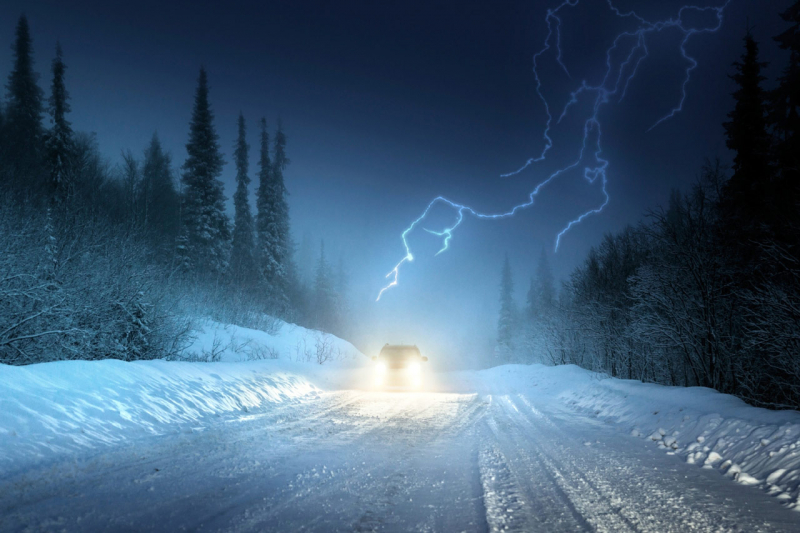
via: ALE Solutions -
An aurora, often known as the polar lights, is a natural light display in the sky that is most commonly seen in high-latitude regions (around the Arctic and Antarctic). Aurora borealis exhibits dynamic patterns of bright lights that appear as curtains, rays, spirals, or dynamic flickers that span the entire sky. The majority of the planets in the solar system, as well as some natural satellites, brown dwarfs, and even comets, are home to auroras.
Auroras are created by disruptions in the magnetosphere caused by the solar wind. Major disturbances are caused by increases in the speed of the solar wind caused by coronal holes and coronal mass ejections. The paths of charged particles in the magnetospheric plasma are altered as a result of these disruptions. Electrons and protons, in particular, precipitate into the higher atmosphere (thermosphere/exosphere). As a result of the ionization and stimulation of atmospheric elements, the light of various colors and complexity is produced. The aurora, which occurs in bands around both polar regions, is likewise affected by the degree of acceleration imparted to the precipitating particles.
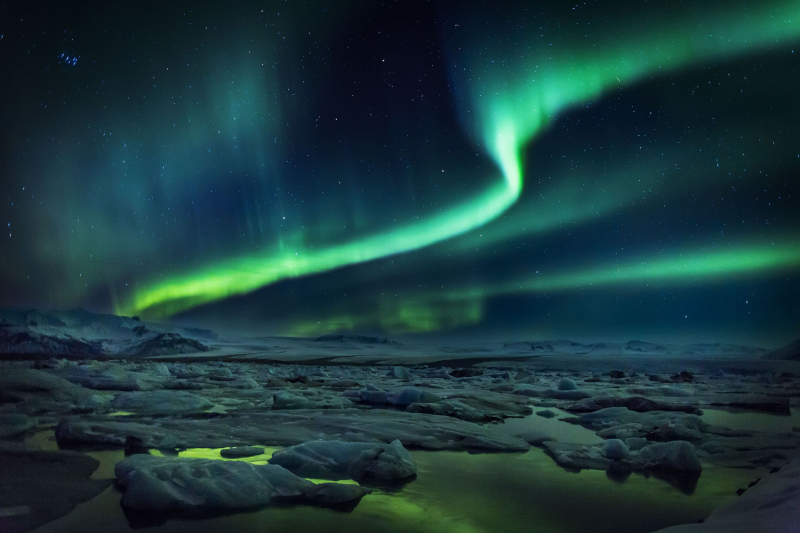
via: ThoughtCo 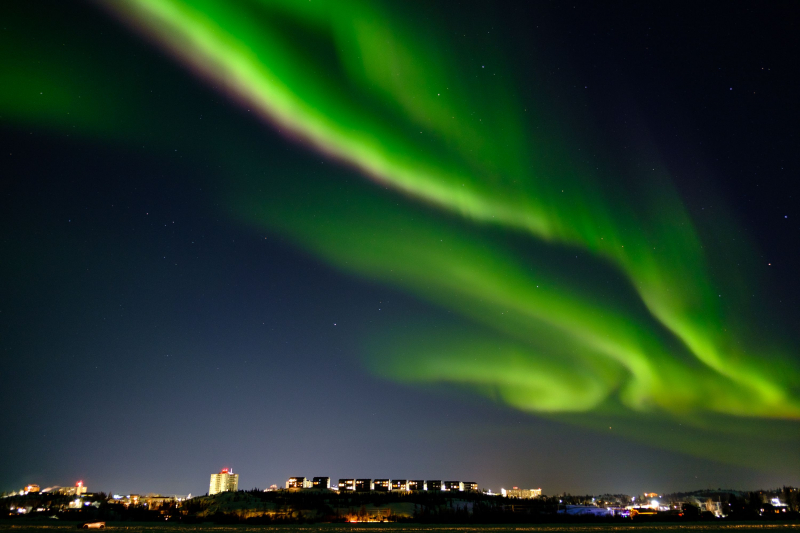
via: The Globe and Mail -
A circumhorizontal arc is a type of ice halo generated by the refraction of sunlight or moonlight in plate-shaped ice crystals suspended in the sky, most commonly in cirrus or cirrostratus clouds. The arc appears in its entire form as a broad, vividly colored band (red being the uppermost color) extending parallel to the horizon, far below the sun or moon. The arc is twice as far away from the sun or moon as the standard 22-degree halo. Only parts of the arc are visible when the halo-forming cloud is tiny or patchy. As with other halos, it can be caused by both the sun and the moon.
The circumhorizontal arc is also known as the circumhorizontal arc or the lower symmetric 46° plate arc. The false phrase "fire rainbow" is occasionally used to describe this event, despite the fact that it is neither a rainbow nor related to fire in any way. The term, which was supposedly coined in 2006, may have originated from the arc's appearance as "flames" in the sky when it occurs in fractured cirrus clouds.
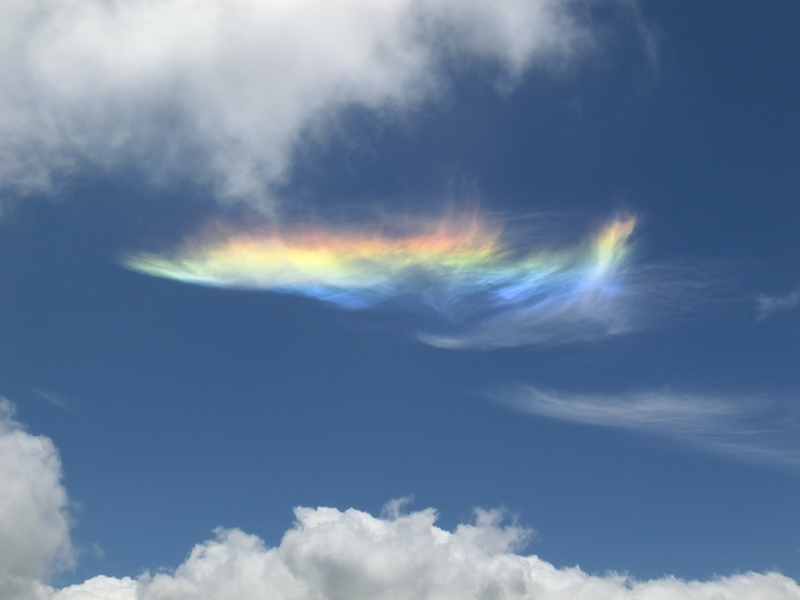
via: Wikimedia Commons 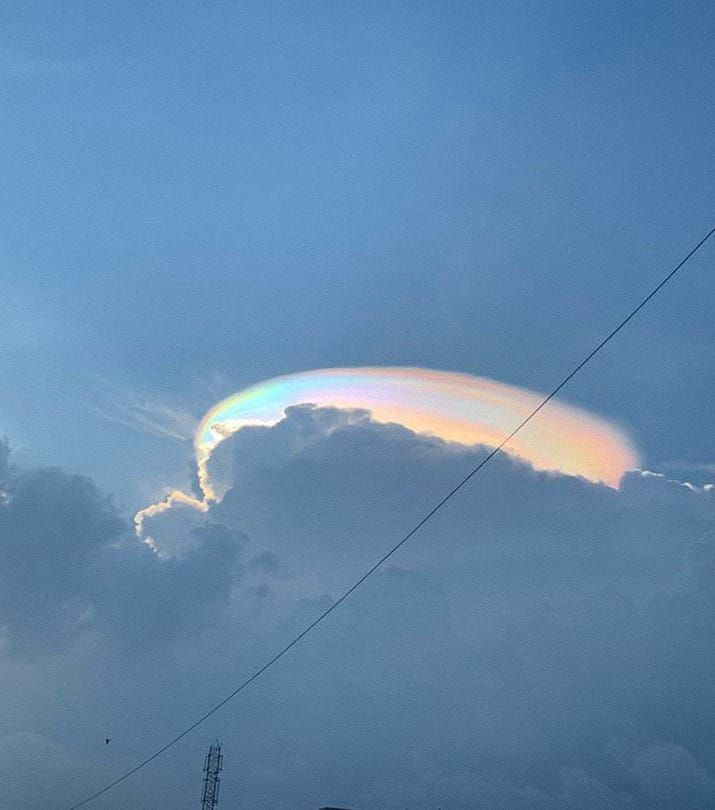
via: Pinterest -
Mammatus is a cellular pattern of pouches hanging beneath the base of a cloud, usually a cumulonimbus raincloud, but they can be linked to other types of parent clouds as well. According to the World Meteorological Organization's International Cloud Atlas, mamma is a cloud supplemental characteristic rather than a cloud genus, species, or variety. The prominent "lumpy" undersides are generated by cold air sinking down to form the pockets, as opposed to puffs of clouds rising from warm air convection. William Clement Ley described these formations for the first time in 1894.
Anvil clouds and violent thunderstorms are frequently connected with Mammatus. They are most commonly found in the foot of cumulonimbus clouds, although they can also be found in altostratus, cirrus, and volcanic ash clouds. Mammatus are often suggestive of a particularly intense storm when they occur in cumulonimbus. Aviators are strongly advised to avoid cumulonimbus with Mammatus because they signal convectively produced turbulence due to the intensely sheared atmosphere in which Mammatus form. Contrails can also form lobes, which are wrongly referred to as Mammatus.
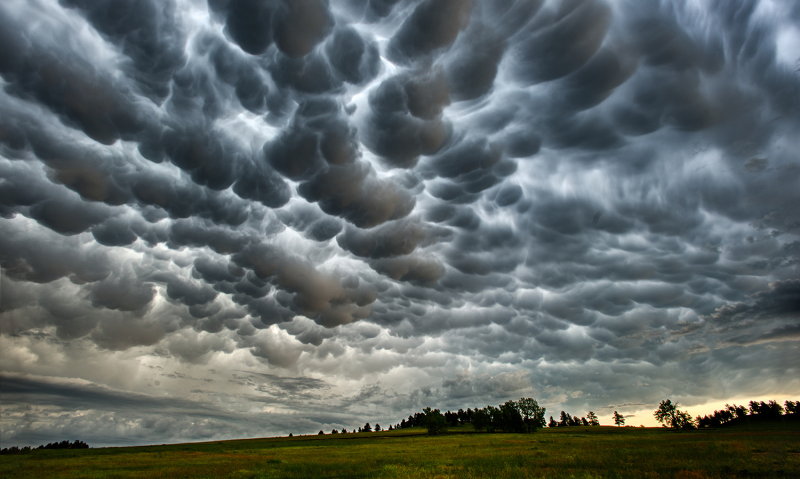
via: Reiner's Travel Photography 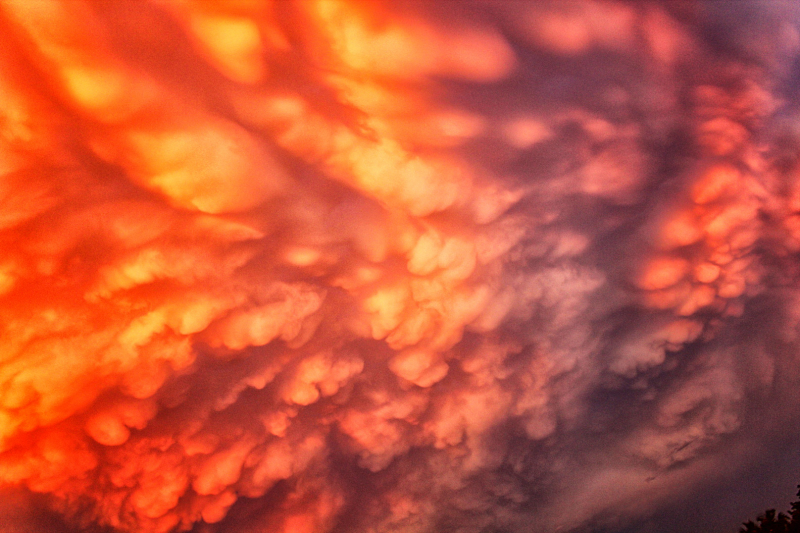
via: Wikiwand -
A sun dog, also known as a parhelion in meteorology, is an optical event in the atmosphere that consists of a bright spot on one or both sides of the Sun. The sun dog is a type of halo generated by the refraction of sunlight by ice crystals in the atmosphere. Sun dogs are often seen as a pair of softly colored patches of light around 22 degrees to the left and right of the sun, at the same altitude above the horizon as the sun. They can be viewed anywhere in the world at any time of year, but they are not always visible or bright. Sun dogs are most visible and noticeable when the sun is near the horizon.
Because the same plate-shaped ice crystals that generate sun dogs also cause the colorful circumzenithal arc, these two types of halo tend to co-occur. The rays flowing through the plate crystals become increasingly skewed from the horizontal plane as the sun climbs higher, causing their angle of deviation to increase and the sun dogs to migrate further away from the 22° halo while remaining at the same elevation.
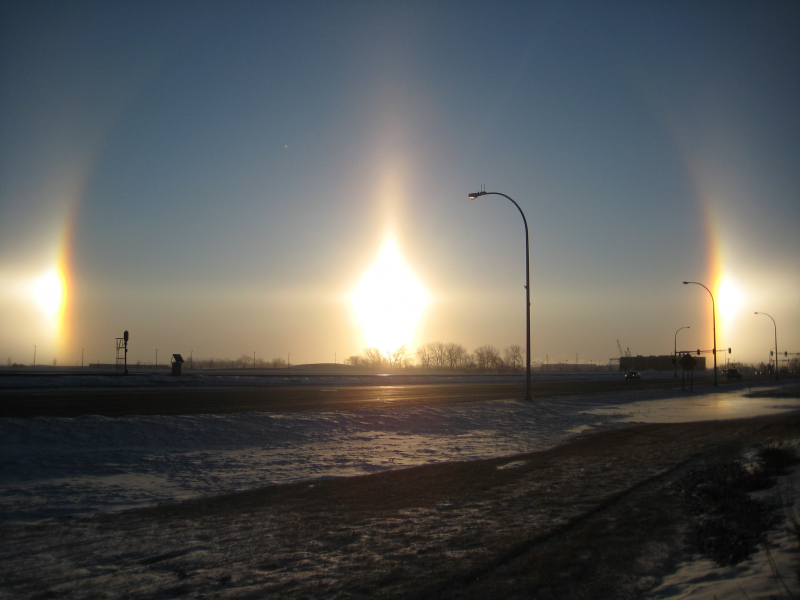
via: Wikipedia 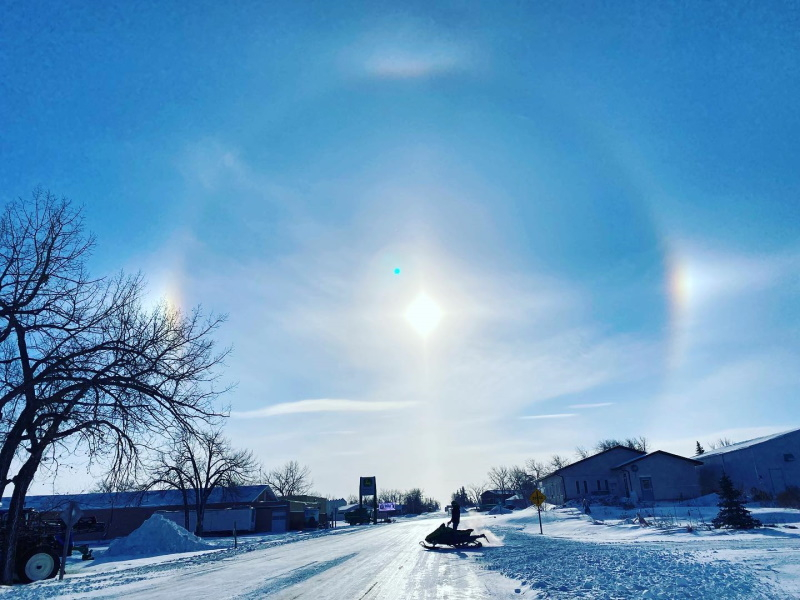
via: Discover Weyburn







